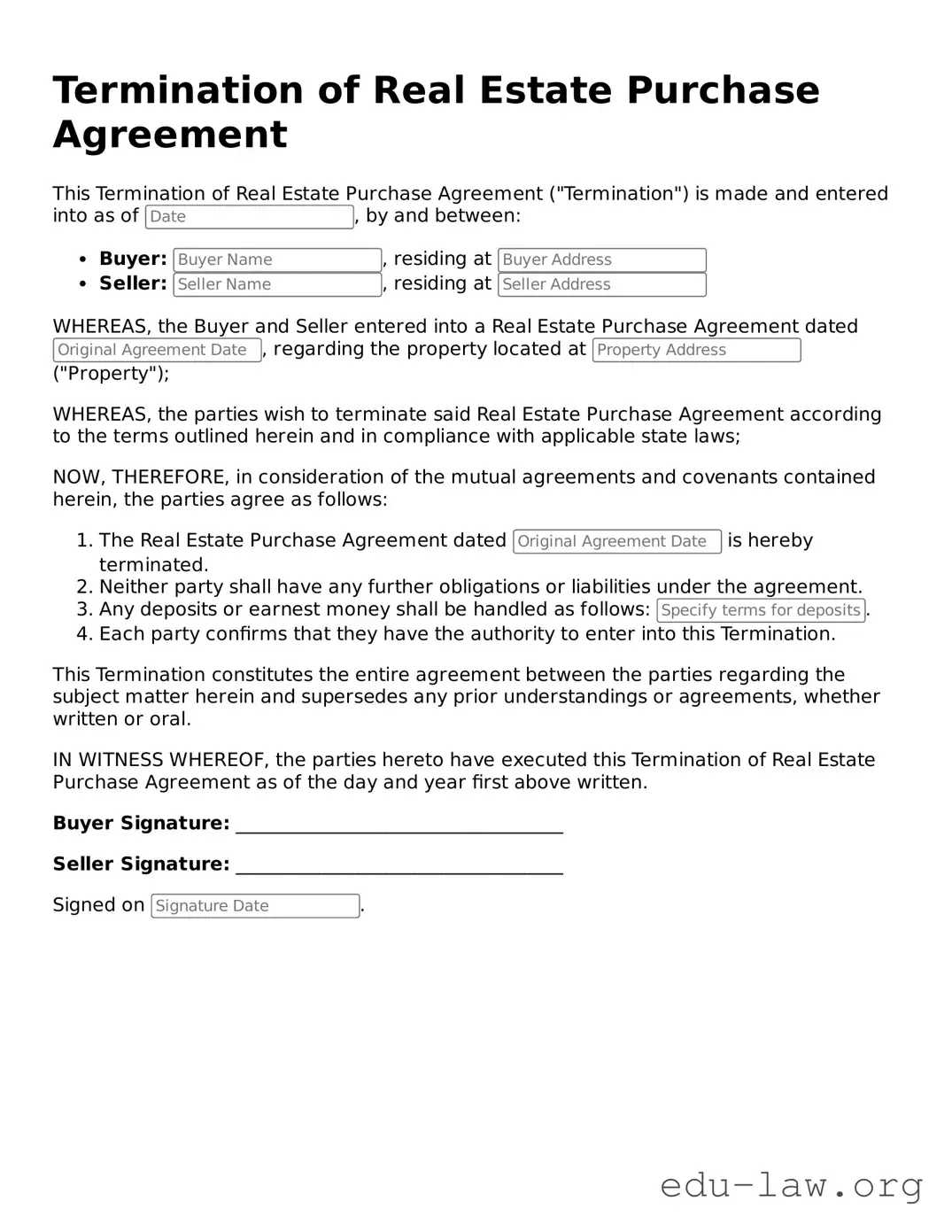Termination of Real Estate Purchase Agreement Template
The Termination of Real Estate Purchase Agreement form is a legal document used to formally cancel a previously signed agreement between a buyer and a seller. This form outlines the reasons for the termination and protects the rights of both parties. Understanding how to properly use this form is essential for anyone involved in real estate transactions.
